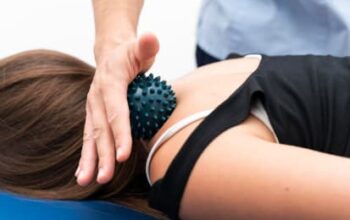The sensation of chiropractic adjustments is undeniably delightful, evoking a desire to replicate it within the comfort of your own home. The serene, flexible sensation post-adjustment is something you cherish, longing to experience it routinely. The sheer pleasure derived from cracking your back ignites a yearning to relish that sensation daily.
However, if you find yourself inclined, like many of our esteemed patients, towards exploring methods to self-administer back cracking for regular gratification, it’s imperative to exercise caution.
Pause for a moment!
Unveiling the truth behind the staggering $12 billion chiropractic care industry reveals a pivotal reason: attempting to crack your back autonomously at home is not advisable.
Decoding the Mechanics Behind Cracking Your Lower Back and Other Joints
When it comes to the human body, joints are often the site of curious sounds and sensations. People may occasionally, whether intentionally or unintentionally, experience a crack or pop in their back, neck, or knuckles. It’s essential to understand that there’s a significant difference between a do-it-yourself joint crack and a professional chiropractic adjustment.
In every movable joint, such as knuckles or the knee, resides a slippery substance known as synovial fluid. This fluid serves as a lubricant, facilitating smooth movement between joints. Over time, activities that engage these joints lead to a pressure build-up within the synovial membrane, resulting in the formation of gas bubbles.
The act often referred to as “joint cracking” is, in reality, the popping or releasing of these gas bubbles. While this action may bring about a sense of temporary relief or satisfaction, it’s important to note that it doesn’t inherently hold any therapeutic benefits.
In contrast, during a professional chiropractic adjustment, the practitioner applies precise force to guide the joints back into their correct position or alignment. This treatment often accompanies a “popping” sound as the gas bubbles in the synovial fluid are released. However, the presence of this sound is not necessary to confirm the success of the adjustment procedure.
Here are few points to remember:
- Joint cracking isn’t synonymous with therapeutic treatment;
- A chiropractor uses specific force to realign the joints, which may result in a “popping” sound;
- The “popping” sound isn’t a prerequisite for a successful chiropractic adjustment.
In seeking relief from joint discomfort, it’s advisable to consult with a healthcare professional rather than attempt to self-manoeuvre your joints.
The Science Behind Cracking Your Lower Back and Other Joints
Even though the term suggests otherwise, cracking your joints does not cause any part of your body to break or split. This phrase commonly refers to the popping sounds or sensations often experienced in your knuckles, neck, or spine.
Synovial fluid, a lubricant substance, is found in movable joints like your knee or knuckles. As these joints undergo motion or pressure, the synovial membrane begins to accumulate gas bubbles.
The act referred to as “joint cracking” is merely the release or bursting of these gas bubbles. While it might bring about temporary satisfaction or relief, it does not provide any proven therapeutic benefits.
In contrast, a chiropractic adjustment, performed by a trained professional, involves the use of specific force to restore joint alignment. It is common for a “popping” sound to occur during this process, but it’s not a definitive indicator of the success of the manipulation.
Thus, understanding the workings behind the cracking sound can demystify the process and reinforce the importance of professional health interventions.
Why You Should Refrain from Cracking Your Back: Five Essential Facts
Attempting to crack your back at home can pose several risks, primarily because it doesn’t equate to a professional chiropractic adjustment. Here are five crucial reasons why one should avoid self-manipulating their back:
- Professionals know best: Chiropractors undergo rigorous training, studying biology, anatomy, physiology, chemistry, physics, genetics, and diagnostic imaging for four years to earn their Doctorate of Chiropractic (D.C.) degree. They possess the required knowledge for safe joint realignment;
- The complexity of the human body: It’s not always easy to diagnose the actual causes of body pain, as our bodily systems are intricate and interconnected. Conditions may vary and each requires specific treatment. For instance, a pinched nerve and a trigger point necessitate different therapeutic approaches. To make an accurate diagnosis, professionals often employ tools like X-rays and other imaging techniques before proceeding with the treatment protocol.
By understanding these reasons, you can ensure you’re taking the right steps toward pain relief and overall wellness. Remember, when it comes to your health, self-diagnosis and treatment can often lead to more harm than good. Always seek professional advice for any persisting discomfort or pain.
The Complexities of Chiropractic Care: Why Avoid Cracking Your Back at Home
You might feel the urge to crack your back at home when experiencing discomfort or stiffness, but this DIY method brings more risks than benefits. Here are five critical reasons to leave joint manipulation to the professionals:

- Chiropractics is a Skilled Profession: Chiropractors spend years earning their Doctorate of Chiropractic (D.C.). Their education includes comprehensive courses in biology, anatomy, physiology, genetics, as well as diagnostic imaging. They understand the science behind the techniques they employ and can safely align your joints without causing harm;
- The Body’s Intricacy is a Mystery: Our bodies are complex systems, and diagnosing the exact cause of pain can be a tricky endeavor. Different conditions necessitate distinct treatments, and unless you have a clear image of what’s going on inside your body, it’s challenging to administer effective treatment. Chiropractors use sophisticated tools like X-rays and other imaging techniques to ensure an accurate diagnosis before starting their treatment;
- Certain Techniques are Infeasible at Home: Manual adjustments provide the backbone of chiropractic care, but they aren’t the only techniques employed. Certain methods like medical massage or flexion-distraction therapy require specialized equipment and a licensed professional to carry out. These treatments are far beyond the realm of DIY;
- Injury Risk is High: Attempting to crack your back at home, without the necessary expertise or equipment, is a recipe for injury. We can’t stress enough the perils of hypermobility, muscle strains, and misalignments that could arise from self-manipulation. Enlisting others to help you isn’t any safer – they might not realize how much force is too much, leading to accidental injury;
- Physical Limitations Matter: It might be easy to pop your knuckles or neck, but other body parts, like your upper or mid-back, hip, knee, or ankle, aren’t as readily accessible. Even if you manage to avoid injury, the experience won’t measure up to a professional chiropractic session.
Understanding these five reasons can help you appreciate the significance of professional help and avoid potential harm. Take proactive steps to maintain your well-being, but always consult a professional when it comes to your body’s pain and discomfort.
Alternative Measures for Back Pain Relief
Knowing that self-adjusting your back carries risks doesn’t mean your discomfort will magically disappear. However, there are numerous safer alternatives to ease your pain efficiently.
- Develop Good Posture: Maintaining proper alignment of your spine and other joints is fundamental. If you have a desk job, considering an ergonomic workspace layout can greatly reduce strain on your back and neck;
- Regular Stretching: Regularly performing stretches can significantly enhance muscle flexibility and decrease long-term discomfort. It’s important to do this consistently to achieve effective results;
- Heat and Cold Packs: The use of hot and cold therapy is a tried-and-true method for managing short-term pain. Heat eases muscle stiffness, while cold packs help reduce inflammation and numb sore areas;
- Medicated Gels or Creams: Topical analgesics like Biofreeze can help alleviate pain temporarily. These products work by penetrating the skin for immediate relief – always remember to follow the product’s usage instructions;
- Foam Rolling: This form of self-myofascial release can help soothe tight, sore muscles and improve mobility. Foam rolling is a convenient and cost-effective alternative to professional massage therapy;
- Professional Help: Consulting with a chiropractor or massage therapist can provide long-lasting relief by addressing the root cause of your discomfort. These trained professionals can provide personalized treatment plans based on your specific condition and needs.
Remember, while these suggestions can alleviate pain to some extent, they are not a substitute for professional medical advice. If your discomfort persists, it’s crucial to consult with a healthcare provider promptly. They can accurately diagnose the source of your pain and recommend the best course of action for your individual situation.
Conclusion
In conclusion, while the allure of replicating the euphoria of chiropractic adjustments at home may be enticing, it’s essential to prioritize safety and seek professional care. The intricacies of spinal manipulation necessitate expertise and precision that only trained chiropractors can provide. Thus, it’s prudent to heed caution and entrust your back health to qualified professionals rather than risking injury through DIY methods.



